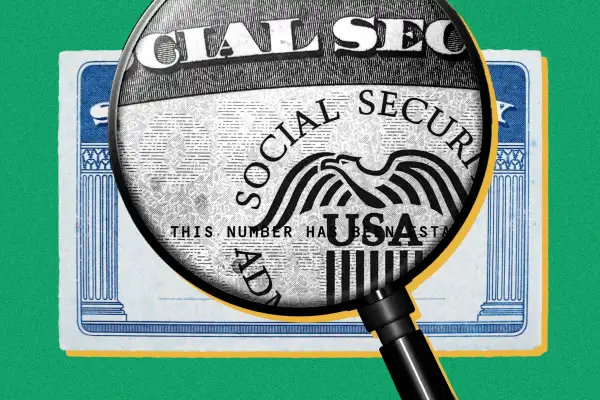Most Workers Expect to Rely on Social Security Income in Retirement. That's Risky

New research shows that many Americans count on Social Security to be a key source of retirement income — but it typically covers less than half of their monthly expenses.
In a recent survey, MFS — a global investment management firm — found that 87% of workers expect Social Security to be a source of income in retirement. The survey also determined that 68% say they expect it to make up less than half of their retirement income. Another 21% expect Social Security to account for at least half of their income later in life.
However, when retirees are asked about their actual income sources, they report that Social Security makes up about 41% of their monthly income. It's the largest single source of funds for many, but that leaves a majority to come from savings, investments and other sources.
The average retired worker currently receives about $1,976 per month from Social Security, according to the Social Security Administration. Meanwhile, the average retired household spends about $5,400 per month, according to the U.S. Bureau of Labor Statistics.
That gap highlights why Social Security alone isn’t enough to cover ordinary retirees' monthly expenses.
Retirement doesn’t always go according to plan — and sometimes it arrives sooner than expected. Nearly half of retirees tell MFS they left the workforce earlier than they planned, often due to health issues, caregiving responsibilities or job cuts.
Just 15% said they had savings when they stopped working. And for those hoping to ease into retirement, options are limited: Only 22% of plan sponsors offer a program that lets employees gradually transition out of the workforce, according to MFS.
Working longer might seem like the obvious fix for inadequate savings, but it’s not always realistic. Still, a growing number of people are facing the financial reality that retirement isn't an option anytime soon. An analysis by Asset Preservation found 51% of employed Americans 65 or older have no plans to retire, citing financial insecurity as a key factor.
The future of Social Security, at a glance
Today’s retirees are already navigating the difference between reality and their expectations, making retirement planning more important than ever. Looking ahead, the future of the federal benefits program adds another layer of uncertainty.
According to the Social Security Administration's most recent trustees report, released June 18, the trust fund reserves that help pay benefits are projected to be depleted by 2033. At that point, incoming payroll taxes would be enough to cover roughly three-quarters of benefits.
All beneficiaries at that time could see nearly a 25% cut unless Congress takes action.
That doesn’t mean Social Security will go broke — benefits will still be paid at reduced levels if nothing changes. However, concern about the program’s future is widespread: 80% of workers and 70% of retirees polled in the MFS survey say they fear significant changes to the U.S. retirement system, including the impact the impending benefit reduction will have on their income in retirement.
The bottom line? Social Security remains a crucial part of retirement income, but it’s increasingly not enough on its own. Workers need to plan with realistic expectations and prepare for a future where Social Security payments may not stretch as far as they hope.
More from Money:
Over Half of Older Employees Plan to Work 'Indefinitely' and Never Retire
Social Security's Trust Funds Will Run Out of Money in Less Than 10 Years
Americans' 'Magic Number' for a Comfortable Retirement Has Dropped $200K
